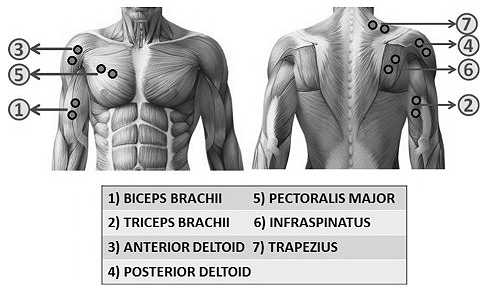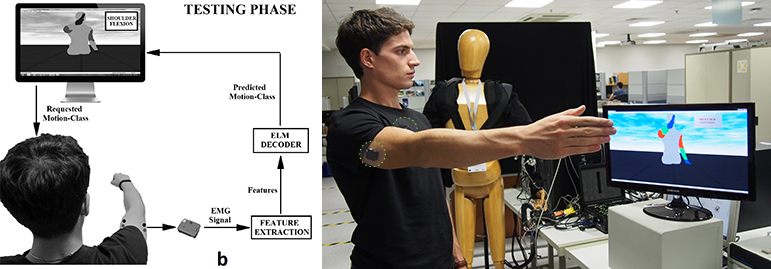Myoelectric signals are rich sources of information about human movement control. They are also easily accessible, making them appealing for controlling devices like prosthetics, orthotics, and exoskeletons. However, the variability of the EMG signal and required processing time make it difficult to design a myoelectric control system for real-time use by multiple subjects. Such a system would have to:
- Be robust to EMG signal changes between subjects.
- Quickly and accurately process incoming EMG data to determine intended motion.
A group of researchers from Singapore and Italy, supervised by Prof. Lorenzo Masia from Nanyang Technological University, is addressing this challenge by employing machine learning algorithms called “extreme learning machines” (ELM). This emerging learning paradigm is noted for its speed and ease of implementation, and requires minimal supervision.
ELM uses training data to infer a set of subject-specific rules for mapping inputs (EMG signals) to outputs (movements). After training, ELM should be able to correctly match EMG signal patterns, including those not seen in the training data, with corresponding movements.
Training Phase
Prof. Masia and his team placed seven Trigno EMG sensors on the upper body (Figure 1) and instructed each subject to perform 10 repetitions of five different arm movements. Over two separate experiments, the researchers extracted two different sets of data from these EMG signals:
- Single-channel features, specifically the mean absolute value and variance of each individual EMG channel
- Synergy features, which employs non-negative matrix factorization (NMF) to identify coordinated patterns across all EMG channels
The ELM decoder was trained on both datasets; the testing phase would determine which signal feature yielded quicker and more accurate movement classification.
Testing Phase
While wearing the Trigno EMG sensors, subjects were asked to perform each of the five movements in a random order (Figure 2).
Custom software calculated either single-channel or synergy features from the incoming EMG signals and passed them to the corresponding single-channel– or synergy-trained ELM decoder for real-time classification.
Results
Prof. Masia and his team quantified the performance of each feature set by measuring the real-time classification accuracy and processing time of both ELM algorithms (Figure 3). Although both performed well, the synergy feature set showed significantly higher classification accuracy and significantly lower processing time.
Prof. Masia and his team have shown that a myoelectric control strategy using ELM and muscle synergies is a promising method that warrants further investigation due to its robust and accurate performance.
Read the original paper: Role of Muscle Synergies in Real-Time Classification of Upper Limb Motions using Extreme Learning Machines
Learn more about: Dr. Masia



